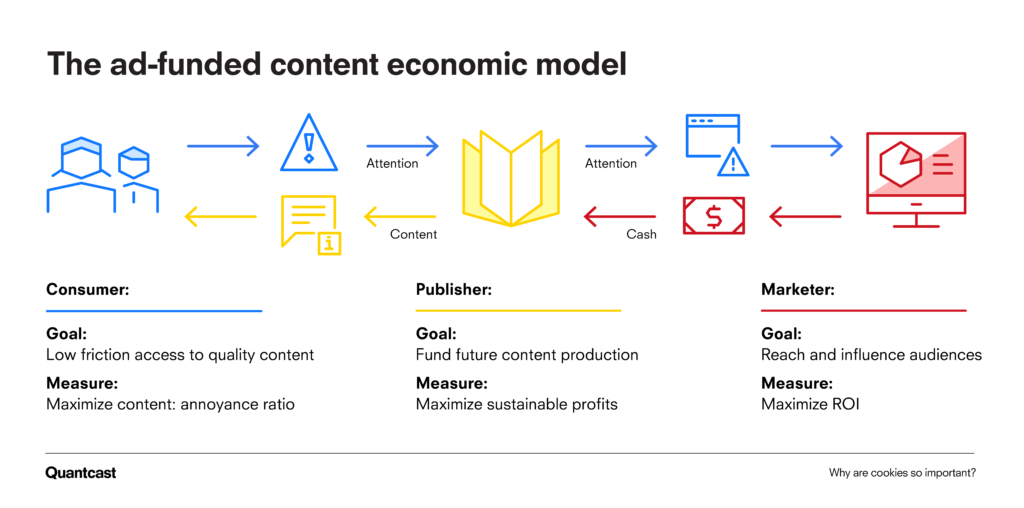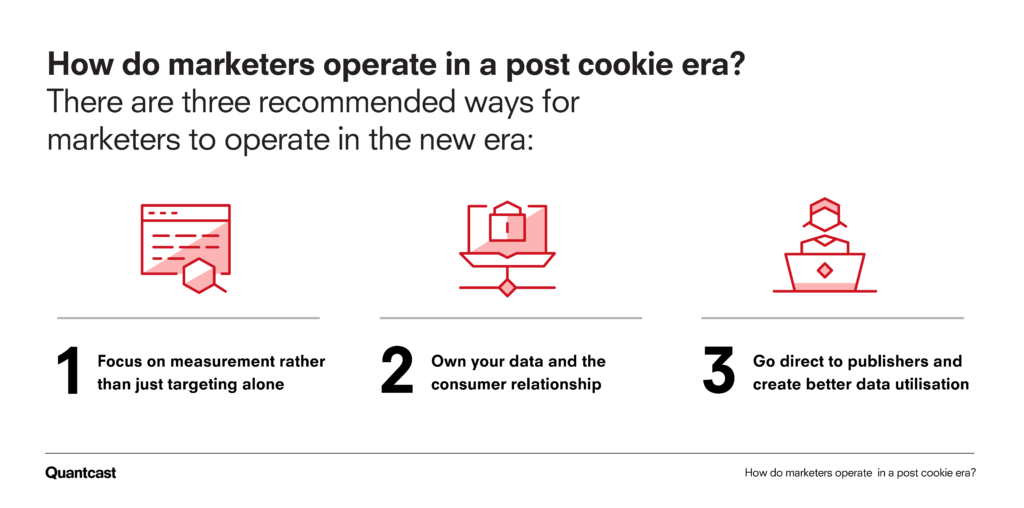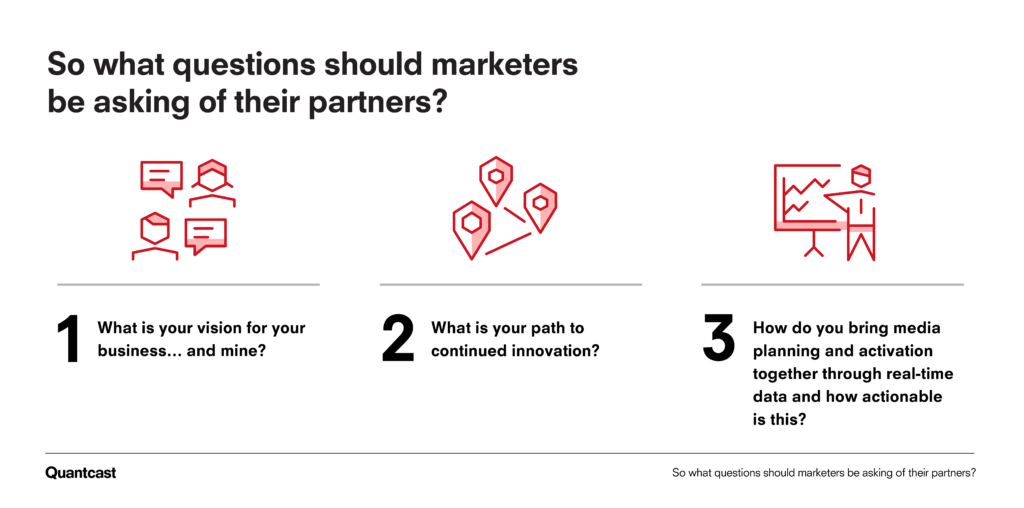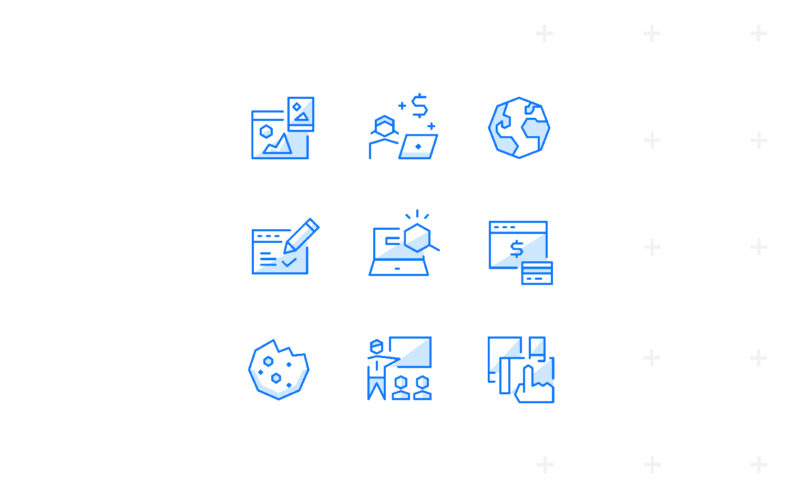The Quantcast Choice CMP was sold to InMobi in 2023, and is now InMobi Choice CMP.
You’ve probably heard by now that the cookie apocalypse is coming and that it will be a watershed moment for the entire internet. What is less understood is how marketers and publishers can operate in this new ecosystem to still get a return on marketing investment and generate sustainable revenues.
What is the best way forward? To understand the path ahead, we need to look at why the path was built and where it is heading.
Google Chrome announced in January 2020 the timeline for making cookies obsolete would happen within about two years. For Chrome users, (which has a large footprint in Asia due to mobile handsets being the first path to the internet for many) third party cookies will eventually be blocked, and new privacy measures will be introduced. This is in line with what we have seen from Firefox and Apple’s Safari, but Chrome represents almost 70% of all browser market share in Asia, which makes it a very important shift.*
This also means that in Asia, where most countries have multiple device users, a cookie-less world will further curtail cross-device targeting across desktops, mobile phones and tablets.

Cookies build up information which allow marketers to advertise to consumers. It’s this provision that has created the ad-funded content economic model.
The entire ad ecosystem is underpinned by the use of cookies and multiple tech companies have active business models within this ad ecosystem. This is why the core of the internet will be impacted and, given the scale and dominance of Google, a cookie-less Chrome will have far reaching implications on the internet as we know it.
Even today, the ad tech ecosystem is fragmented, as evidenced by the ad tech lumascape, which illustrates the vast number of companies that service internet advertising and leverage cookies and cookie matching to fund the ecosystem. Many involved have reason to want to preserve it. The challenge of the post-cookie world is not about preserving the fragmented ecosystem of ad tech, it’s about preserving the ad-funded content economic model.
A publisher’s prediction of yield for programmatic is leveraged by the use of data relevancy for a marketer to continue to spend with that publisher. If cookies go away, the knock-on effect will see either higher ad density for users, or publishers will have no choice but to move to paywall models. In all cases the consumer loses, and marketers end up with higher ROI costs.

Without cookies, marketers will have less signals to assess that they are targeting the right audience. Yet, how marketers measure attention will be critical in supporting the economic model. Marketers will want to own their own first party data and use it for media activation. Therefore, it’s likely that we will see more marketers moving to an in-house data model and also begin to see digital transformation acceleration because of the impact of COVID-19.
Building a first party relationship with your customer will be even more important in order to understand your audience and their ever-changing behaviour as third party cookies disappear. This is why we will see marketers wanting direct relationships with publishers to determine the impact of their marketing spend to direct sales.
In addition, partners that offer targeting solutions activated by first party data and use sophisticated audience modeling solutions will become a gateway to reaching relevant audiences in the post-cookie era.
Another important area for marketers to focus on is the continued need to better understand their ever-changing audience. Identifying audiences based on their interests will be paramount for marketers to scale their campaigns using real-time buying signals and can help provide measurable insights. This will require huge data processing capabilities and machine learning technology to enable marketers to leverage this meaningful data.
As marketers think about the post-cookie world, they need to ask the right questions of their agencies, platform partners and ultimately, deeply understand consumers.
Quantcast has never been solely reliant on cookies to deliver advertising services, instead of using probabilistic audience modeling and contextual signals, providing an opportunity to partner with publishers to create new ID solutions, while also fully respecting the privacy and consent of consumers. To this end, Quantcast created its own transparency consent framework platform with IAB Europe (Interactive Advertising Board) that has helped publishers and advertisers remain compliant with GDPR.

The future is unknown but by working with a strong combination of your agency, platform partner and understanding their data products and innovation, marketers will achieve a better path to success than those who are not preparing for a world without cookies.
If you’re interested in learning more, check out our most recent webinars today! Quantcast Webinars
Source:
GS Statcounter
